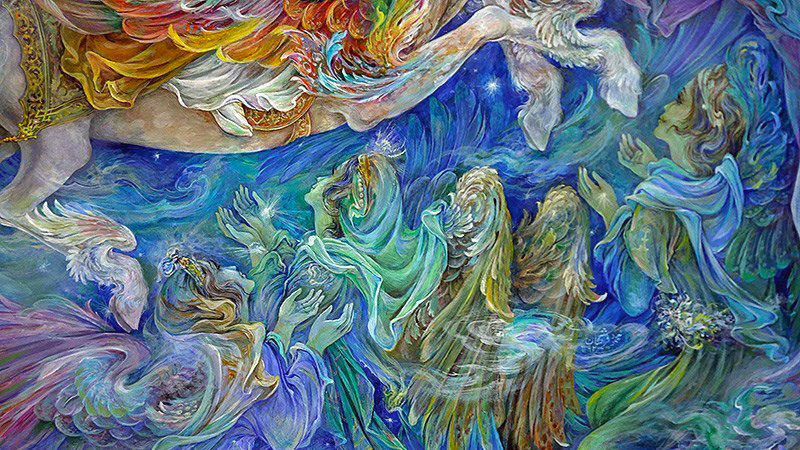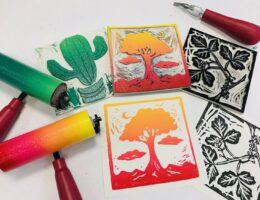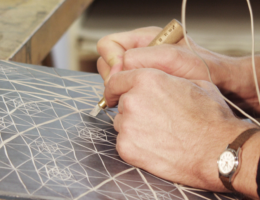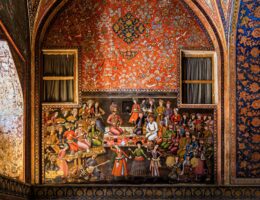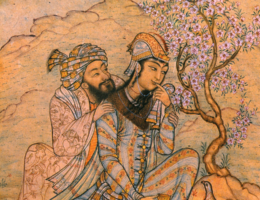IRAN ART EXHIBITION: PERSIAN MINIATURE ASTONISH EVERY VIEWER
Based on the figures and motifs Mani, the Iranian prophet, Painter and Calligrapher, has pioneered the miniature of Iran. As he had painted tiny figures in his book in the 3rd century, he can be considered the frontrunner of the miniature art. Mani introduced himself a prophet during the Sassanians and presented a pictorial book called Arzhang. He had his particular style in painting characterized by detailed small figures and motifs. After Mani, there had not been found any trace of this art in any forms of art.
Miniature of Iran in Its Early Centuries
During the early post-Islam period and after the collapse of Sassanians, according to written evidence, Sassanians influences could have been observed on the paintings of 7th to 12th centuries. Of course, the influences of the Middle Asian themes and meanings were observable although biased Caliphs had prohibited human figures to be painted.
Seljuk Miniature Painting
Seljuk paintings are indicative of some unified style and perception. The pictorial presentation was so strong then that started to extend beyond the geographical borders to the other nations under Seljuks’ domination. This style had two major characteristics:
1. Round full faces with tight mouths and diagonal eyes; and,
2. A completely contoured style in representing bodies, plants, animals and natural landscapes.
Ilkhanid Miniature Painting
After the devastating invasion of Mongols, little by little, at the northwest of Iran, the Ilkhanid court promoted traditional, artistic and cultural issues. During that period many pictorial manuscripts were created in the fields of zoology, botany, and history. Various styles were created in miniature of Iran at Baghdad, Tabriz, etc which had nothing to do with the Seljuk styles.
Jalayerian Miniature Painting
Jalayerian dynasty, after Ilkhanids, promoted miniature not only in Tabriz and Baghdad (their two capitals) but also in Shiraz and other cities of Iran. The style of painting in each city was different from the other cities.
Mozaffarian Miniature Paintings
The Mozaffarian dynasty also ruled in parts of the present-day Iraq and Fars province of Iran and came up with their own styles.
IRAN ART EXHIBITION: Therefore, after the collapse of the Seljuks, within a span of time extended to the period before Timur’s invasion, the Iranian miniature was flourished and many independent schools were created like Tabriz school, Baghdad school, Shiraz school, and Mozaffarian School. Lots of ancient Iranian stories and poems of Ferdosy, Nezamy, Hafez, Sa’ady, Jamy, etc were depicted in pictorial manuscripts in addition to the artistic books created.
Timurid Miniature Painting
The political as well as artistic center of Iran moved to the northeast as s result of Timur’s invasion. Samarqand and Khorasan attracted many artists. One of the most distinguished styles triggered during that period was a combination of Jalayerian and Mozaffarian schools together with elements and details supposedly portraying traditions of the Middle Asia. So, the first classical or official style was formed in Iranian miniature. During three and half centuries after that period, there were only some individual styles added to/combined with them.
Herat was another capital for half a century from which Herat school in miniature emerged in Iranian miniature. All calligraphers, goldsmiths, miniaturists, and bookmakers of Baisonqor’s court were moved to Herat. They created some of the most appreciable pictorial manuscripts in the history of eastern paintings. Those miniatures were created in an absolute balance of scale, composition and color selection.
Baisonqory Shahnameh is a unique unparalleled masterpiece created during the same period. Thanks to Shahrokh, Timurid king, and his sons being the patrons of miniature, this art flourished in Herat, Shiraz, Baghdad, Tabriz, Samarqand and many other regions. The style of Timurid court laid a solid foundation for the next 150 years not only for Turkmen artists of Iran, but also for Safavid and Ottoman artists.
Toward the end of Timurid period, when Sultan Hossein seized Herat, he ordered a new pictorial copy of “Zafar nameh” to be written and painted. The majority of the miniatures of that manuscript were painted by the famous Iranian miniaturist of all ages, Kamal-ed-Din Behzad. He and his contemporary artists managed to refine and perfect the classical style of Timurids. Behzad followed Herat classical school to create his best works of art.
IRAN ART EXHIBITION: Later, Bukhara took Herat as its first example and made copies of previous pictorial manuscripts. Bukhara school did not flourish as a new innovative school, but there were professional miniaturists creating beautiful world of colors and depicting marvelous scenes. During that period Qazvin, Esfahan, Shiraz and Tabriz were still active centers for miniaturists.
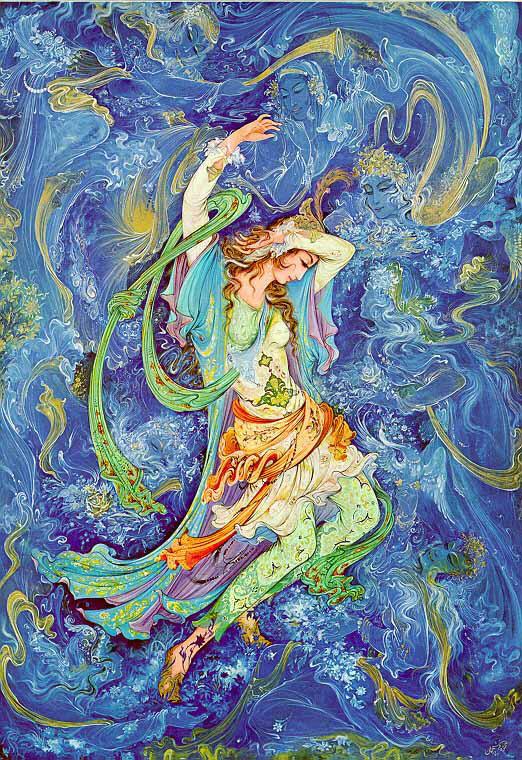
Some of the Highlights of Miniature Painting in Iran
Safavid Miniature Painting
Shah Ismail, the founder of Safavid dynasty, assigned Behzad as the head of the royal library in Tabriz. During the next king’s reign, many works of art were created. A breathtaking copy of Shahnameh was painted with 250 large miniatures, Tahmasby shahnameh. Later Tahmasb stopped patronizing arts by starting to live a pious life.
Many miniaturists migrated to other countries, especially to India. Mashad and Qazvin became new center for supporting miniature. King Ismail II supported miniaturists a little more than Tahmasb. A copy of Shahnameh was created during his reign having 50 miniatures following his court’s style.
Miniature remained at the same status until shah Abbas I took power and ordered many miniatures, mural paintings, etc and a lot of previous works to be restored. Miniatures also decorated a number of Safavid palaces in the capital, Esfehan. People were generally spending more money to buy works of art although they had not probably been richer than before. It, finally, resulted in the first well-established relationship between the text and pictures in classical Iranian painting. Khorasan was the second important arts center where good quality miniatures were painted in manuscripts pages.
IRAN ART EXHIBITION: The miniatures of Safavid palaces in Qazvin and Esfehan were generally inspired by the personal style of the most famous artist of that era, Reza Abbasy. During the time when he was working, signing the works of art became customary.
Indian and European influences in art were welcome by the king and caused his taste to be gradually different in ordering new works. There is a great debate as to the success of Iranian artists to evolve their arts under such influence. The opinions are quite contradictory.
Safavid period ended and the evolution of Iranian miniature failed to continue. Westernized styles started to flourish and Iranian painting entered a new era. Iranian miniature is still being painted but has lost its popularity as the only Iranian style of painting.
